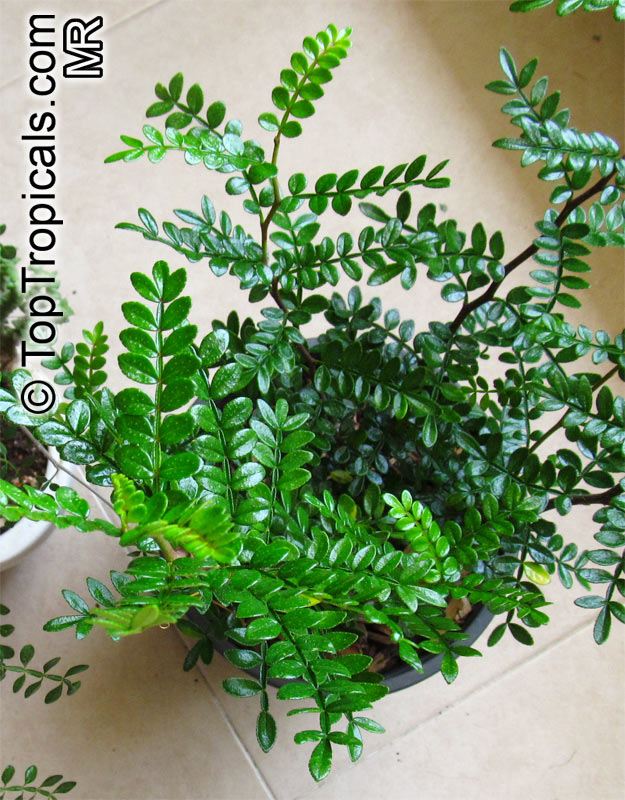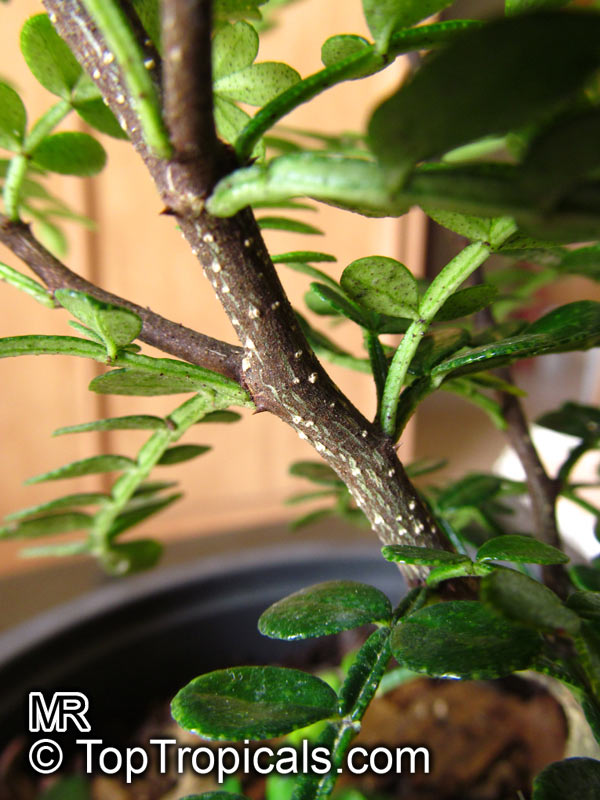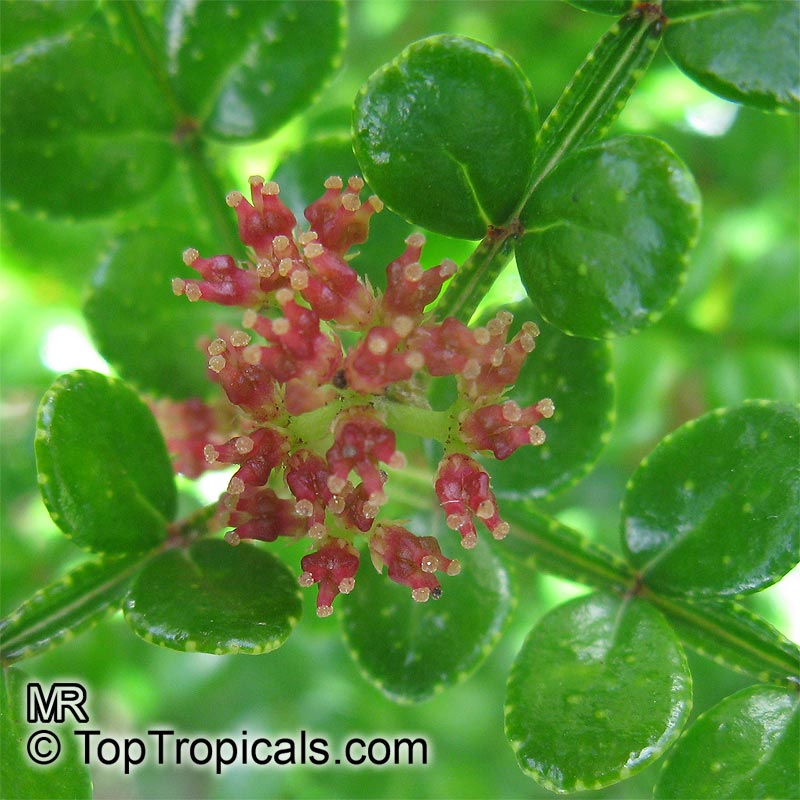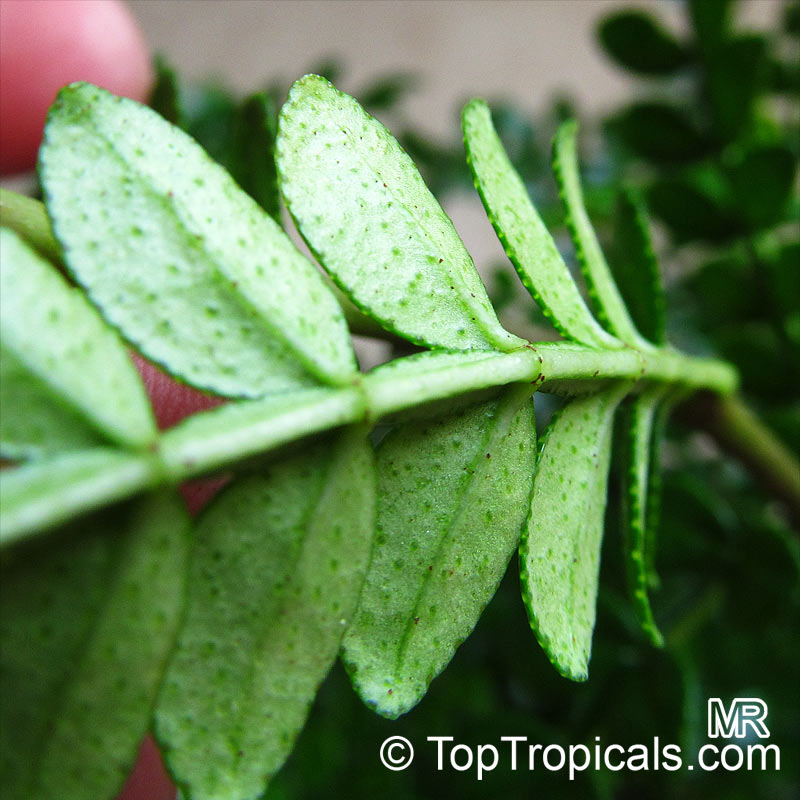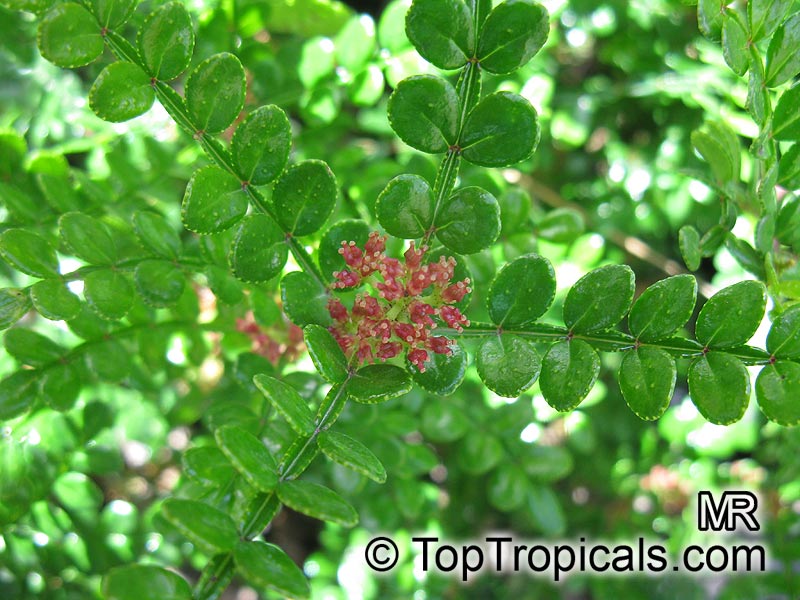Zanthoxylum beecheyanum (Chinese Pepper Tree)
Top Tropicals Plant Encyclopedia
Botanical name: Zanthoxylum beecheyanum
Common name: Chinese Pepper Tree
Family: Rutaceae
Origin: Estern Asia








Zanthoxylum beecheyanum, commonly known as Chinese Pepper Tree, is a deciduous plant native to Eastern Asia. It is most often grown as a small shrub, typically reaching 2-5 feet in height. This plant prefers full sun, although it also accepts semi-shade. It is hardy in USDA Zones 9-11.
In the spring, this plant blooms red, crimson, or vinous flowers. These flowers are highly fragrant, and appear in clusters. Once these flowers have bloomed, green fruits appear and ripen in fall, just as the leaves begin to change colors. The fruits of Chinese Pepper Tree are bush-like, resembling small peppercorns.
These plants are relatively easy to care for. They prefer regular water, especially during the hot and dry periods of summer and the cooler months of winter. Alternatively, they can be grown in pots and moved around to locations that suit the climate, making them useful in areas where winters can be too severe. Be sure to plant them in soil that drains well, as these plants are not tolerant to soggy roots. In areas with cooler winters, these plants can be grown both indoors and outdoors, and will produce beautiful foliage indoors in the colder months of winter.
Overall, Chinese Pepper Tree is an easy to maintain, bold shrub with a unique aroma and an air of oriental flair that brings a unique personality to your garden. With the right balance of sun, water, and nutrients, you can enjoy beautiful flowers and fruits from this spectacular and understated specimen.
